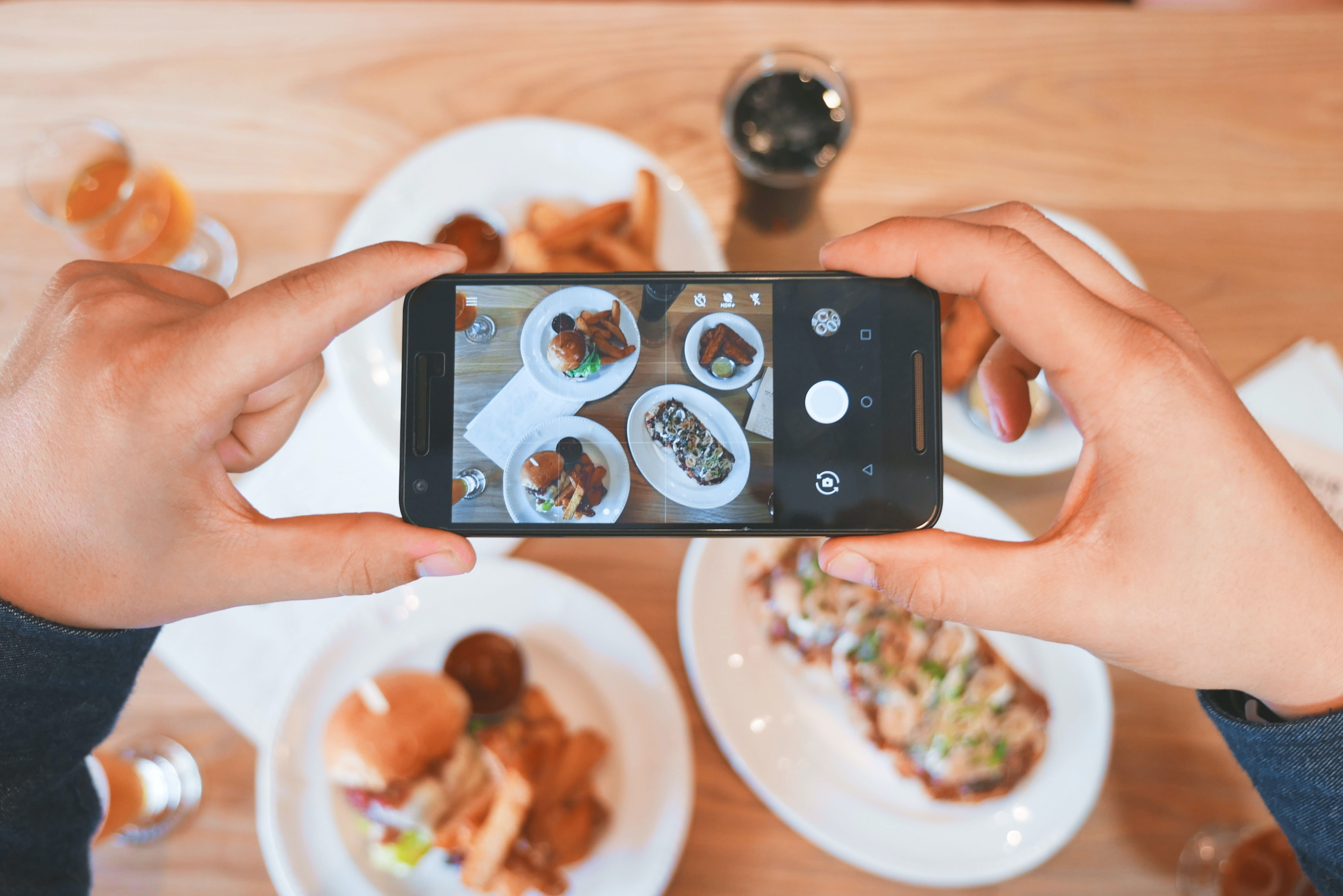
How Your Business Benefits From User Generated Content
Last update: 27 April 2023 at 12:40 pm
User-generated content is a great way for companies to create authentic and compelling content for their social media marketing.
In this article, we’ll therefore tell you what exactly UGC is, what advantages and disadvantages it entails, and how you can profitably use different forms of user-generated content for your business.
What is User Generated Content?
User-generated content, or UGC for short, stands for the use of content for marketing purposes that has been created by fans of a brand themselves.
There are many different formats and content that can be used. Self-generated images or videos are very popular, but the use of written comments, product reviews, or even entire blog articles is also a frequent occurrence in user-generated content.
Especially with the rise of social media marketing, user-generated content has seen a big boost, because social media makes it easier than ever to get your community on Instagram or other platforms to submit your content.
Advantages and Disadvantages of User-Generated Content
Many companies like to use user-generated content because there are some advantages to incorporating content from consumers themselves. However, there are also one or two disadvantages that UGC has, which is why we want to take a closer look at both sides.
The advantages of user-generated content
One big advantage of UGC is that you can use content to promote your brand without having to invest a lot of capacity yourself. Rather, your community, primarily on your social media channels, creates the content itself and you as a company only have to sort out and curate what content you want to use for your campaign.
Another advantage is the authenticity that comes from user-generated content. Since users themselves create the reviews, comments, and other content, there is a certain trust associated with it, which in turn can encourage other followers to trust and stay loyal to your brand. Customer loyalty but also generating an authentic and positive brand image are the goal here.
Furthermore, user-generated content also gives you the opportunity to expand your reach and reach more people via your social media platforms than you might have managed with purely brand-related campaigns.
After all, when users discover your own photos on their Instagram page, Facebook page, or other social channels, they are more likely to share that content themselves, and in turn, positively influence your followers.
The disadvantages of user-generated content
Even though the advantages outweigh the disadvantages for many companies, there are one or two points that should be considered when sharing content with users.
For example, there are definitely legal aspects that brands need to consider. If you use content from users on your own channels, then you need to be sure that they also have permission and rights to include the content and assign them to you as a company.
If you reproduce something for which you do not have the rights, then this is considered a violation of copyright or even personal rights.
That’s why, when it comes to user-created content, you should always make sure to include appropriate T&Cs or terms of use to legally protect your business, as well as provide a source for the content.
Finally, the last point to mention is the lack of control you have as a brand over user-created content. You cannot influence the content itself, nor the quality of the images or videos, and thus, when in doubt, you may have to use content that may not fully meet your brand standards.
To avoid these problems, it may be advisable to rather put the creation of your own content in professional hands and hire a content marketing agency. If you still want to give UGC a try, you can seek advice from a social media marketing agency in advance to avoid any unpleasant surprises.
What Forms of User-Generated Content Are There?

User-generated content can take many forms and be used in different ways. In the following, we will take a look at the most common forms of content that users create for a company.
Texts
There are many different ways to use the written word of users. On the one hand, customer reviews can be used on a company’s website, or they can be used on Google as a rating for products. In addition, positive comments from users under a picture on Instagram or Facebook are also an option to use a user’s text for your own UGC campaign.
Images
A picture is worth a thousand words – and a picture of a user often says more about a company than a promotional photo produced with a lot of money. Users often like to post a new product they’ve purchased on their own social media channels. An ideal basis for sharing and reposting these posts and thus leveraging user-created content for your own Instagram page.
Videos
Moving images are becoming increasingly important for outreach on social networks like Facebook and Instagram. That’s why you shouldn’t miss out on using videos from your users.
One way you can use moving images on your website, for example, is with unboxing videos, which are especially popular on YouTube. A user receives a new product and presents it to his followers in more detail. But tutorials about a product of your brand can also lead to more reach.
Audio
Podcasts are becoming more and more popular – and they’re also becoming easier for users to create themselves. That’s why it’s no wonder the number of podcasts is going through the roof: 690,000 new podcasts were published in 2021. User-generated content will play an increasingly important role here, too, because if users create audio content themselves, then the odd comment about a brand’s products will certainly not be missed.
How Can I Use User-Generated Content?
There are many ways to turn user-generated content into a campaign for your company. One popular form is a contest in which customers provide their self-created photos, video recordings or even texts under a certain hashtag and the best results are selected from all the submitted contributions, which then receive a reward.
For events, too, a hashtag is the best option to bundle all the posted content of the participants across all channels and thus make it findable and, above all, reproducible for your marketing team.
On your website, again, embedding comments or reviews from customers is a good strategy to not only motivate other people to make a purchase, but also to boost their overall ranking online for certain keywords.
Finally, ongoing campaigns can also be used with photos of customers, in which users rate products, unpack them or otherwise integrate them into their everyday lives. This more mundane form of UGC is extremely helpful, especially for a brand’s social media channels.
Examples of User-Generated Content
Many companies use UGC to create content for their brand. But there are definitely a few examples that stand out. We’ve picked out three UGC campaigns that stand out with their strategy and results.
Dream Job Motivation: Queensland Tourism Authority

In January 2009, the tourism authority of the Australian state of Queensland launched the “Best Job in the World” campaign to attract more tourists to the country.
The UGC campaign promised one lucky winner a dream job as a reward, living on an island for six months and acting as an ambassador for the Great Barrier Reef. A whopping 35,000 people from 200 countries around the world applied for the job description, and individual application videos on YouTube reached nearly 200,000 views.
Go to the Best Job in the World campaign page here.
Create your own burger: McDonald’s

Who wouldn’t like to have their own burger at one of the world’s biggest fast food chains? That’s exactly what McDonald’s Germany thought and launched the “Burger Battle.
Via a specially created website, users could submit their recipes for their own burger creation, which other users could then vote for. The recipe that received the most support from the community was officially put on sale. In 2015, the campaign garnered more than 17 million votes.
The viral hit: The ALS Ice Bucket Challenge

In the summer of 2014, hardly any social network user got around the Ice Bucket Challenge. In order to generate more attention for the nerve disease ALS and to collect donations, the activists Pat Quinn and Pete Frates launched the campaign in which they poured a bucket of ice-cold water over their heads and then nominated another person to do the same.
By the end of 2014, this had raised 200 million US dollars in donations worldwide, which support research into the nerve disease, among other things.
Conclusion
User-generated content is a great way to make your online and social media marketing more interactive. In doing so, you can kill several birds with one stone: you get content for your page, the posts act as an advertisement for your brand, and views of this nature can serve as motivation for more engagement.
So go ahead and give it a try and call on your community to post and submit. We wish you the best of luck with this!







